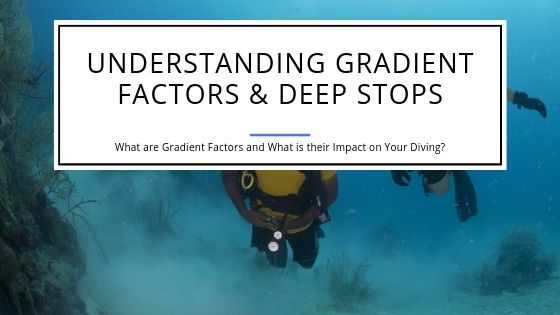Understanding Gradient Factors & Deep Stops
If you’re someone who dives frequently or somewhat frequently you’ve had to work on your deep stops and the right calculations for your gradient factor. This is an evergreen concept, and with the advancement of science and technology, it is also constantly changing.
What Are Decompression Stops?
Let’s start off by straightening out what a decompression dive is. A decompression dive involves making a single or multiple stops underwater before reaching the surface. The science behind this is that when you’re underwater, you are breathing in compressed air so when you breathe out, you also release certain gases such as nitrogen which are absorbed into your bloodstream.
If this gas is in excess amounts, it starts to bubble out in front of you and may cause something known as decompression sickness. This is where the required decompression stops come in to lower the amount of these gases entering our system. These stops are known as Deco Stops (Decompression Stops) – Decompression Diving – What is it?
When you start off with basic dives, you are generally taught a bit about dive tables which essentially act as a set of guidelines about the depths it is safe to dive to and the time period that can be spent there. This time period is known as the No-Decompression Limit (NDL). As long as you’re within the NDL there is no need for a deco stop.
Your dive computer can help you figure out the depths at which to take these decompression stops and for how long.
(Note: decompression dives are not advisable for the casual or recreational diver since they are only equipped with a single gas tank and may be at risk of running out.)
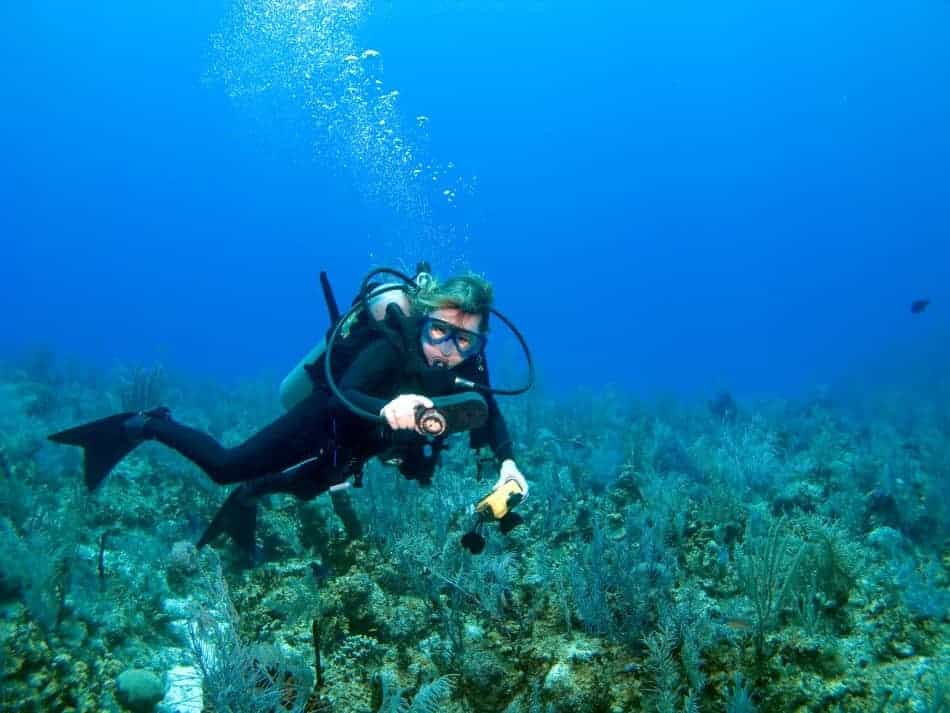
Let’s Dive Right Into It- What Are Deep Stops?
Before we begin, let’s just clear one thing, decompression stops and deep stops are not the same thing. The key thing to remember is that deep stops are pauses that are taken during the ascension to the surface, before any decompression stops. This stop prevents gaseous bubbles from forming in your bloodstream and allows you to rise to the surface at a slower pace.
The more advanced your dive computer, the higher are the chances of it taking deep stops into account during the calculation of its algorithms. If your computer doesn’t have this feature, you can manually calculate one as follows:
Deep Stop Depth= Maximum Depth/ 2
Deep Stop Duration= 30-60 seconds
The pivotal role of the deep stop is to control the release of compressed gases from your body to prevent them from releasing too quickly and causing decompression sickness. In a utopian world, the ascension rate would be very slow to ensure that the gas level in your tissues never exceeds the saturation point. Since this is not possible or ideal for the average diver, there are other methods that have been tested over the years:
- Ascending at a rate where you are close to the line of saturation but don’t actually cross it. This is inspired by the theory of a Scottish physiologist, John Haldane and can reduce the problem of decompression tremendously but there have been numerous times when divers still had gas bubbles in their bloodstream.
- This problem of remnants of gas bubbles is dealt with by the deep stop. Deep stops start earlier on in the ascension process and last for a short period of time. This makes it almost impossible for the diver to reach the saturation point and also stops the formation of bubbles at an earlier stage. This also speeds up the amount of time it takes you to get back to the surface.
It sounds pretty straightforward so far right? Well, it gets a bit more complicated moving forward. The tissues in our body are not all the same. Some are fast at absorbing and releasing gases, other take longer.
Your deep stop may not take the slower ones into account, and the residual gas bubbles in your body may cause problems at a later stage. Some advanced dive computers take into account the presence of different types of tissues in your body. This is where we start taking gradient factors into consideration.
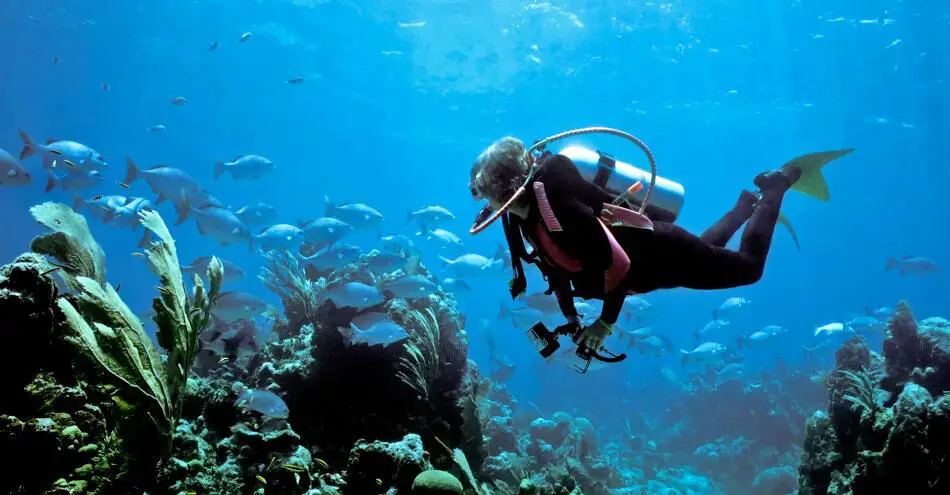
What Are Gradient Factors Really?
The Bühlmann Model & the Bubble Model
Let’s start off with some basic concepts. If we look at scuba from the perspective of professional divers, all dives are inadvertently decompression dives. Once we’ve established this fact, we can alter our behavior accordingly, especially during the process of returning to the surface.
The depths you reach, the gases you inhale and the amount of time you spend at the bottom of the surface is different in every dive. The one common factor in all dives is the risk of inhaling too much of the compressed gas and facing the symptoms of decompression sickness.
It is imperative to plan your dives before making the plunge. If you’re the “safety first” kind, you may opt for a pre-set, previously tried and tested decompression algorithm. If you’re a little more experimental with your dives, you may have to generate an algorithm to suit your specific needs.
If you’re an expert diver, you’ve probably heard of Bühlmann before. His work involved developing a model based on the way compressed gases enter and leave the body based on the changes in pressure.
It is an inverse exponential model, which is used by dive computers to generate decompression tables and for individual dives, help in determining the NDL (No-Decompression Limit) and decompression depths and durations.
However, this model is based on the premise that by following the devised algorithm and ascending accordingly, your body will no longer form gas bubbles. Recent research suggests that regardless of the type of dive and the algorithms you follow, these bubbles are still likely to form. The latest decompression models include adjustments for the fact that these bubbles will be formed and aim to control their growth and spread in the body. These are known as Bubble Models.
This does not discount the feasibility of the Bühlmann model. Countless divers still make use of it and have a great and safe diving experience. The key here is to slightly tweak the Bühlmann model to take into account the saturation of bubbles based on the varying depth, otherwise known as a time-and-place curve.
The decompression algorithm in your dive computer tries to simulate what happens in your body under the water pressure. It takes into account the different tissues and the rates at which they soak up and release gases
(Important Note: these tissues are not the human tissues; they are a mathematical figment used for the sake of algorithmic calculations).
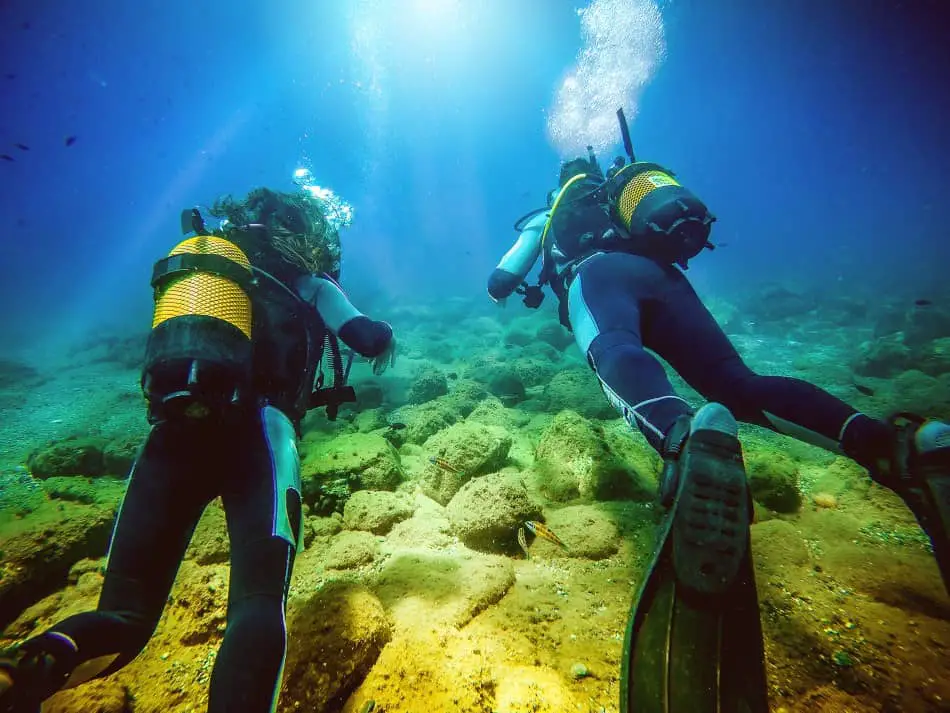
The M- Value
The standard saturation of these mathematical tissues is around 6 half-times. If a tissue has a saturation of around 640 it will take nearly 64 hours to reach your desired state. Each type of tissue has a maximum threshold for withstanding pressure, which once exceeded leads to gas formation.
This maximum pressure is the tissue’s M value. These M values are backed by the fact that they were successfully used by U.S. Navy all the way back in the 1960s.
However, these values were only done for sea-level, which did not take into account diversification. That being said, the M values still offer some level of accuracy underwater and if the M Value is 100% decompression stress is likely to occur.
Finally, Understanding Gradient Factors
Now getting back to the real matter at hand: gradient factors. Gradient factors fall in a range of 0-100% where 0 is a safe zone and 100 is the point where bubbling has reached a dangerous level. During scuba, the effective decompression level lies somewhere between these values and it varies based on different divers, locations, depth under the surface and time spent under the surface.
The general diver sets a high and a low Gradient Factor before diving in. The Low Gradient Factor signifies the depth at which the diver makes the first stop of decompression. The High Gradient Factor refers to how close you as a diver are to a 100% M Value when you’ve finally ascended to the surface.
Every diver has to set their own Low Gradient Factor to set a precedent for the decompression process. The gradient slope, which is the level of pressure build-up, is based on how comfortable and willing you are to be a bit experimental with the values. A common Low Gradient Factor, which has also been suggested by professionals as well is 30%. Consider this to be the point where theoretically, more gas is dispelled than absorbed into your bloodstream.
Dealing with the High Gradient Factor is a whole other ballgame. This is where your risk-taking characteristics come into play, as the closer you are to a 100% M Value, the deeper you are and the more pressure your body is experiencing. The general High Gradient Factor is 80% although some professionals recommend 70% as being the ideal figure.
In short, a Gradient Factor range of 30-70 is considered to be ideal without being too high risk.
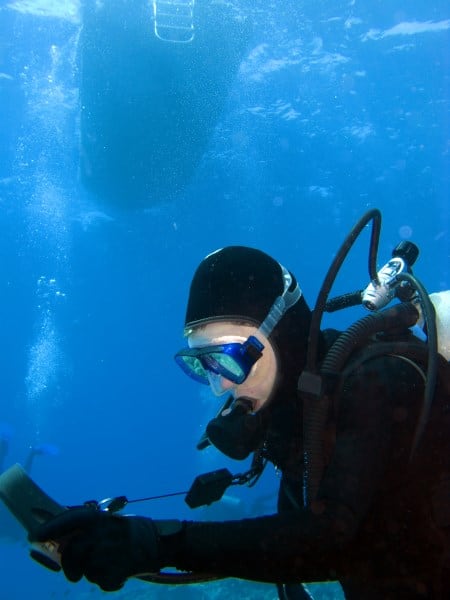
Don’t take this range to be set in stone. The type of water and the depth of your dive can greatly impact these M Values. If it’s a deep dive of say 65 meters, then this range is ideal. But if it’s a relatively shallow dive of around 20 meters, this range is unnecessarily restricting. In fact, for much deeper dives, this range is too small! So as you can see, the depth of your dive is crucial in deciding the ideal Gradient Factor range.
Ideally, read up about other divers’ experiences, develop formulae based on your own dives and establish an optimum range that is perfect for your particular dive. Always bear in mind that no calculation is perfect and no one, not even a scientist can predict the exact outcome of your dive.
Why Gradient Factors Are Useful
Just like we previously mentioned a line of saturation, the Gradient Factor forms a new line to keep you in control when you’re under the surface. It helps you manipulate your decompression algorithm and merge the Bühlmann and Bubble models to create a single algorithm that takes into account the level at which gases start decompressing and the depths at which you need to stop to prevent bubble formation.
The ideal gradient factor is one which stops bubbles from forming on your first deep stop and you’re not ascending too fast. It ensures that you don’t spend too much time on your stops and don’t run the risk of bubble formation build-up.
Are Deep Stops Necessary?
Decompression sickness is treatable but can lead to more serious health risks. By adopting deep stops and decompression stops, the likelihood of this happening is around 4/10,000, which makes these stops an essential part of deep diving.
It is always necessary to ensure that you know what your dive computer is capable of. You may unknowingly be using a dive computer with the ability to run different types of algorithms and not using all its available features.
It is best to do some research before you buy your dive computer (or if you’re a frequent diver, buy a new dive computer) as to what algorithm it follows and how you can gauge the gradient factor range based on your past experiences and those others. Collectively, the aim is to ensure that you avoid the risk of decompression sickness and have an enjoyable scuba diving experience without suffering and pain or injuries once you’re back on the surface again.
Happy Diving!

